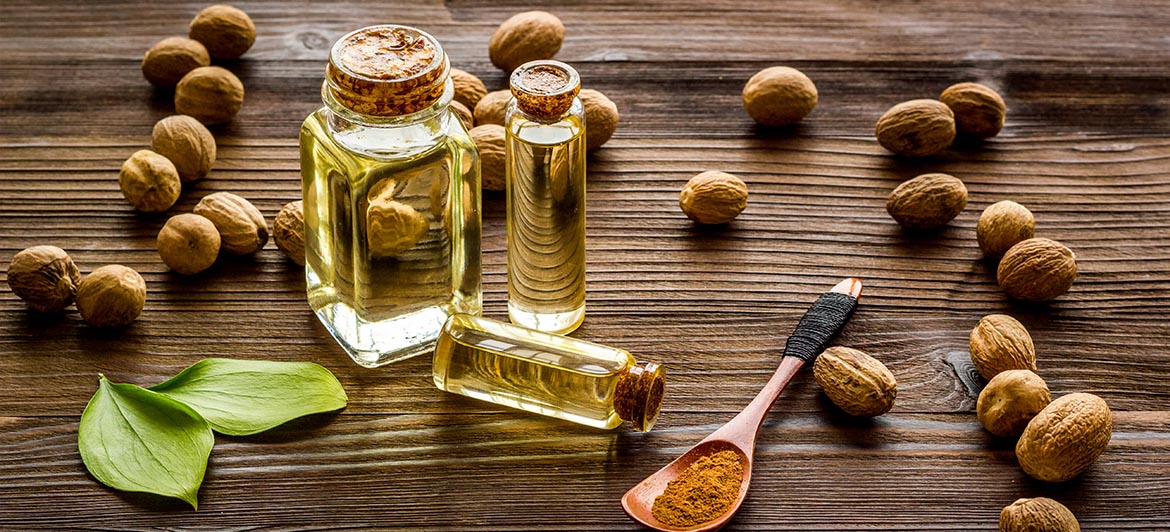Unveiling the Aromatic Majesty of Ceylon Cloves
abr. 22, 2024
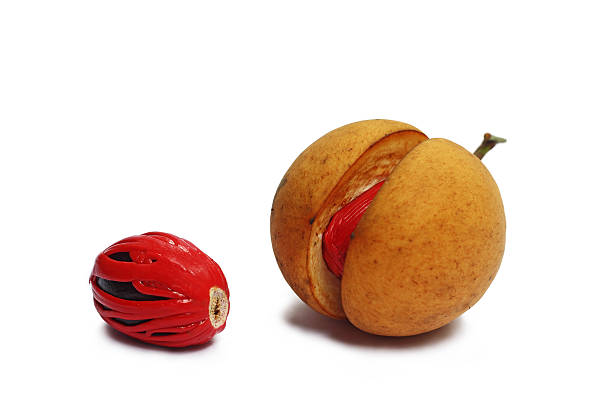
Nutmeg (Myristica fragrans) belongs to the Myristicaceae family. It is a highly valued spice on the world market and is the only tree to produce two separate spices: nutmeg and mace. The fruit has a hard seed called a nutmeg and a lacy red membrane called a mace surrounding it. Nutmeg originated in the Moluccas in eastern Indonesia (Banda Island) and was discovered by the Portuguese. First, nutmeg seeds were spread by the Dutch and distributed throughout the Western Pacific and Asia. It is currently cultivated in various countries including Indonesia, Taiwan, Malaysia, India, Grenada, South America, and Sri Lanka.
Botánica, Morfología y ecología
La nuez moscada prefiere un rango de temperatura de 22 a 340 °C para crecer bien. Un suelo bien drenado, fértil y con un alto contenido de materia orgánica es un suelo ideal para el cultivo de nuez moscada. En Sri Lanka, las regiones más adecuadas para el cultivo de nuez moscada son la región central (Kandy, Matale y Kegalle) porque prefiere el clima fresco. Desde Sri Lanka se exportan diferentes productos a base de nuez moscada, como el aceite esencial de nuez moscada, la nuez moscada molida y el macis. La temporada alta de cosecha es de junio a agosto.
La nuez moscada es una planta perenne de hoja perenne que crece hasta 25 pies de altura. Las hojas de nuez moscada se muestran en disposición alterna y glabra y tienen un aspecto brillante y además desprenden un olor aromático. Es una planta de polinización cruzada debido a la cantidad inadecuada de flores de ambos sexos en un árbol. La flor de nuez moscada es de color amarillo y se pueden encontrar pequeños racimos auxiliares. La flor suele ser de un solo sexo y las flores femeninas y masculinas se encuentran en el mismo árbol. El fruto carnoso es drupa redonda y ancha con crestas longitudinales a lo largo de su circunferencia. Durante el repegado, el color del fruto cambia de verde a amarillo y el pericarpio se divide en dos mitades, dejando al descubierto la semilla. La semilla de nuez moscada es carnosa, firme, blanquecina y rica en aceite. Es transversal por venas de color marrón rojizo.
Botany, Morphology and Ecology
Nutmeg prefers a temperature range of 22-340C to grow well. Well-drained, fertile soil with high organic content is ideal for growing nutmeg or nutmeg. The most suitable region for nutmeg cultivation in Sri Lanka is the central region (Kandy, Matale and Kegalle) as it prefers a cool climate. Various nutmeg-based products such as nutmeg essential oil, nutmeg powder, and mace are exported from Sri Lanka. The peak harvest season is from June to August.
Nutmeg is an evergreen, perennial plant that grows up to 25 feet tall. The leaves of nutmeg are arranged alternately and shiny, have a shiny appearance, and have a fragrant smell. It is a cross-pollinated plant because male and female flowers do not bloom properly on the same tree. Nutmeg flowers are yellow and are found in small secondary racemes. The flowers are typically found on the same tree with both male and female flowers. The fleshy fruit is a round drupe and is wide with a longitudinal ridge along the circumference. During the seeding process, the color of the fruit changes from green to yellow and the pericarp splits in two to reveal the seeds. Nutmeg seeds are fleshy, hard, whitish, and rich in oil. Red-brown veins are arranged horizontally.
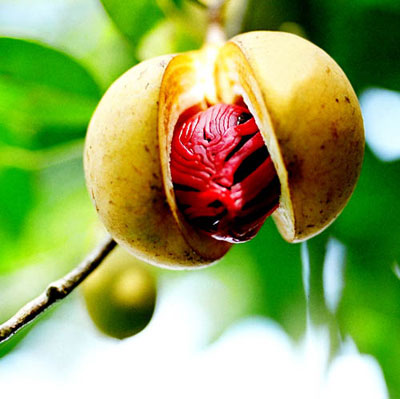
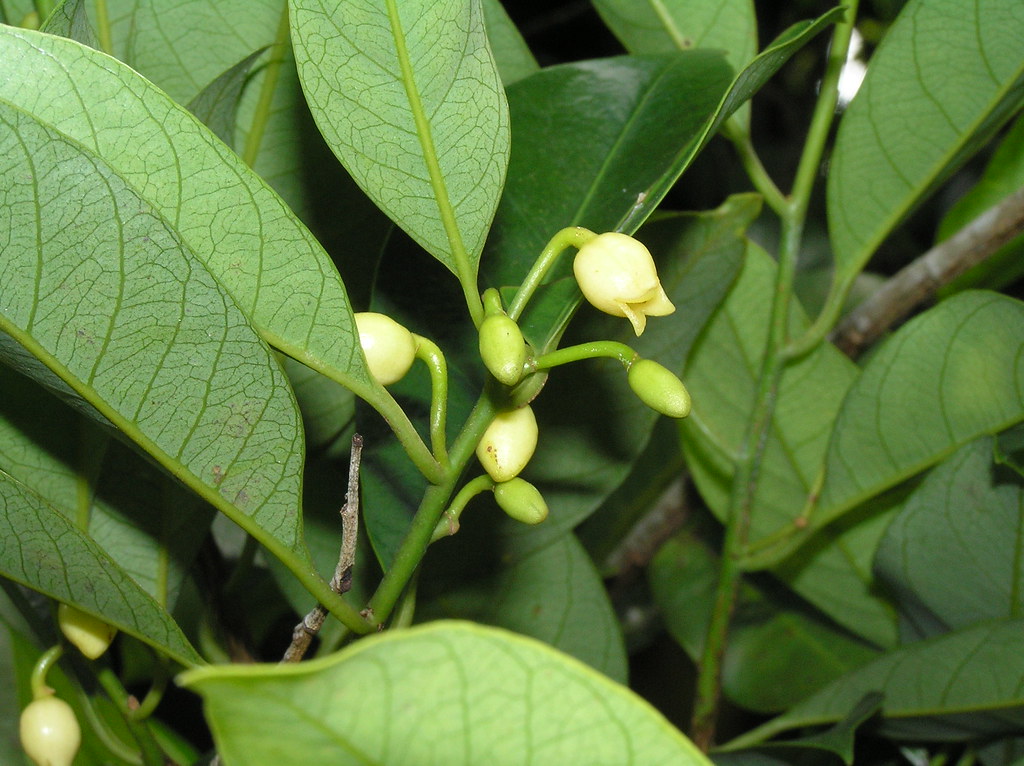
chemical composition
Nutmeg and mace have very similar chemical composition and aroma, but have significant color differences, ranging from bright orange to pale yellow. Nutmeg is composed of starch, lipids, fat (30-40%), essential oil (10%) and protein. Nutmeg has a nutty and sweet taste due to its chemical composition. The distinctive aroma is caused by the presence of essential oils containing terpenes, sabinene, camphene and myrcene. Phenylpropane, alkaloids, flavonoids, tannins and phenolic photochemicals present in nutmeg give it pharmacological value and it is rich in minerals such as Co, Zn, Mn, P and Na and vitamins such as C, A and B. .
Usage
It is commonly used in high-color dishes to provide a bright orange, saffron-like color. Both mace and nutmeg have a variety of uses, from culinary to medicinal. Nutmeg essential oil is used in the synthesis of camphor, plasticizer, base, solvent, perfume and pine oil, to produce cosmetics such as shampoos, soaps and shaving creams. Nutmeg produces a variety of value-added products, including custards, spice cakes, cookies, soups, and cheese.

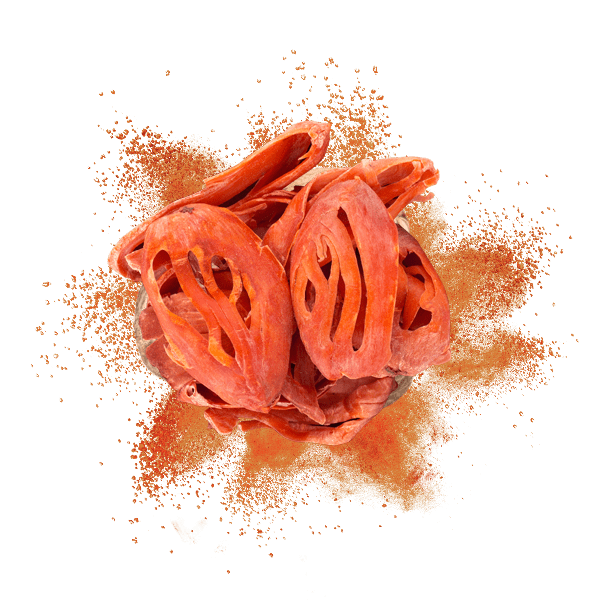
health benefits
Nutmeg contains a variety of antioxidant health-promoting and disease-preventing properties. It has a variety of therapeutic uses in traditional medicine. However, taking high doses can cause lack of concentration, sweating and palpitations, and body aches. Some of the health benefits include:
Used for diseases related to the digestive and nervous systems
Pharmacological properties
